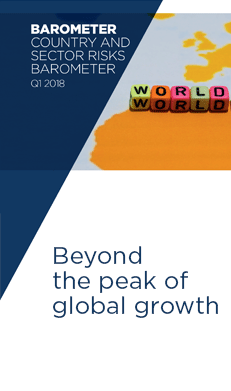Impact of lower international oil prices on Latin America

Latin America is a major producer of commodities and the recent drop in oil prices is impacting the region’s countries in different ways. Which countries could benefit from lower international quotations - and why are others negatively impacted?
Oil prices have been in freefall over recent months, from their peak of 114.81 USD onJune 20 2014, to 48.47 USD on January 28 2015 (see chart 1). The 57.8% contraction is associated with an increase in output, combined with lower demand. On the supply side, the recent shale revolution in the US has raised production in the country to the highest level in three decades. In counterpart China, which is the main consumer (12% of total oil consumption), has demanded lower volumes due to the slowdown in GDP growth. The OPEC decision on November 27 to keep production at the same levels, contributed to the downwards pressure on oil prices. The goal behind OPEC´s decision is to discourage investments in new shale fields, as it reduces their relative profitability.
The impact of oil prices in Latin America depends on how long these lower prices will last, and varies according to the different countries in the region.
Venezuela is the most affected and the IMF forecasts that every $10 decline in oil prices will reduce the trade balance by 3.5% of GDP. Considering their net oil exports, Colombia and Ecuador are, respectively, the second and third most sensitive countries to the drop in oil prices.
In counterpart, Chile, Brazil, Argentina and Peru tend to be positively impacted by the trade balance. However, in the medium term lower prices could negatively impact fuel investment plans in Argentina and Brazil.
Forecast for Colombia, Chile and Argentina
"Growth should improve in Latin Americain 2015, Coface expects the region´s GDP to increase by 2.3%. Despite the better outlook, the rate is still considered weak, mainly due to the stagflation scenario inBrazil. Brazil represents a large part of Latin America´s activity and its economy is not likely to pick up - at least in the short term”said Patricia Krause, Coface Latin America economist.
In Colombia, the activity should remain strong. Growth will continue to be led by the domestic market, mainly due to investments in infrastructure, social housing and household consumption. Inflation closed at 3.66% in 2014, surpassing the target midpoint of 3. The recent drop in oil prices is deteriorating terms of trade, impacting its currency and putting upwards pressure on prices.
In Chile, the activity has been slowing down since the final quarter of 2013 and by the third quarter of 2014 reached its slowest growth pace since 2009 (+0.8% over one year earlier). The movement is mainly associated with lower copper prices, which impact trade balances and investment plans. Exports in Chile account for 27% of GDP and half of the export basket is composed of mineral commodities. A tax reform, which was signed into law at the end of September 2014, also contributed to reduced business confidence.
Argentina is still transiting through a scenario of turmoil. Activity probably contracted in 2014, inflation stands close to 40% (according to non-official sources), there is a lack of international reserves and the debt default situation has not yet been resolved. Coface forecasts that GDP will have contracted by 1.5% in 2014 and by -1% in 2015%, due to declining household consumption associated with high inflation, the deteriorated job market and low confidence concerning the future scenario.
Focus on major sectors
Mining in Chile
Copper’s leading position will be maintained, but the scenario is challenging. Mining is a major pillar of the Chilean economy. The country is the largest producer of copper (roughly one third of world´s supply) and also produces gold, silver, molybdenum, iron and coal. Copper is responsible for 50% of Chile´s exports and 15% of gross domestic product. Rising production costs may also present a threat to the segment’s performance.
Construction in Colombia
Contrasting with the negative perspective of the oil industry, this industry holds opportunities in an environment of strong growth and of poor infrastructure.Colombiahas been performing well in recent years and so has its construction sector. It has, in fact, been one of the highlights of the economy.
Auto in Argentina
A weak economic scenario is impacting the industry. Argentina is the third largest automobile market in Latin America and the world´s 23° largest vehicle producer. It represents roughly 5% of GDP, or 20% of industrial production. However, activity was disappointing in 2014, mainly due to the country’s current economic scenario and its effect on consumer confidence and purchasing power.
DOWNLOAD THIS PUBLICATION
TABLE OF CONTENTS:
- Steep decline in oil prices and its mixed effect on the Latin America region
- Sectors
- Conclusion
- Mining in Chile
- Construction in Colombia
- Auto in Argentina







